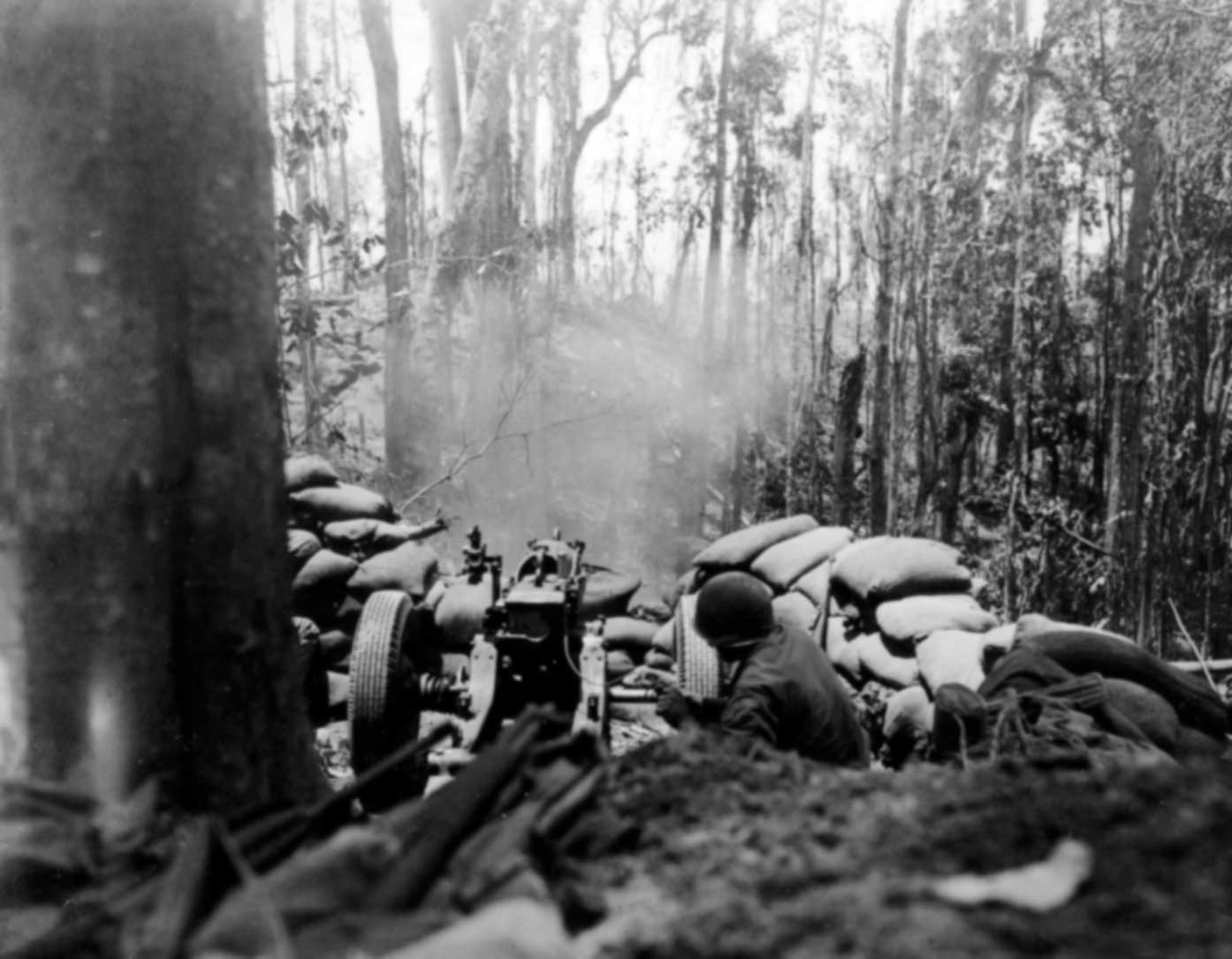American gunners from the US Army firing a Light Field 75mm Pack Howitzer M1 at the Japanese at Hill 260 on Bougainville Island (Solomon Islands). Pacific theater of operations, World War II.
The M116 (75mm Pack Howitzer M116) was a US 75mm towed pack howitzer during World War II. The development of a pack howitzer to replace the obsolete QF 2.95 inch Mountain Gun of the same caliber, intended primarily for use in mountainous and other difficult areas, began in the years preceding the First World War. As a result of this, a howitzer was created in 1920-1927, which was adopted in 1927 under the designation M1 (75mm Pack Howitzer M1). Due to the lack of funding during the interwar period, the production of howitzers was initially carried out only in small quantities, and only in 1940 did the production of a modernized version of the howitzer, designated M1A1, begin.
In the 1930s, the 75-mm pack howitzer M1, in addition to its main role, was adopted by the Marine Corps, and during the Second World War, on a modernized carriage, it was adopted by the airborne troops. The production of the 75-mm pack howitzer M1 continued until December 1944, in total during this period 5030 guns of this type were produced in several versions. In addition, a howitzer on a heavier non-pack carriage with sliding beds was adopted by the cavalry as a field artillery weapon (eng. 75mm Field Howitzer M1A1), but its production, which lasted from January 1941 to May 1943, was limited to a relatively small series of 349 units.
Location: Bougainville, Solomon Islands
Shooting time: March 1944
